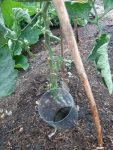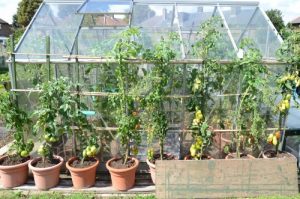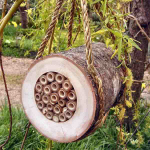Water, precious water
We are entering a possible drought situation so we all need to do what we can to avoid wasting water. Also it is part of our ethos of being environmentally responsible to conserve water as much as possible.
A few tips on how we can help use less water:
- Do not use a sprinkler. So much of the water evaporates and it is against RGS rules (Rule 22)
- Water the ground as near to your plants as possible. This also helps with weed control as you won’t be watering the weeds as well as your plants.
- Watering under the top growth of your plants will help to reduce water evaporation as it will tend to be cooler and will create a humid environment.
- Can be good to have a watering hole next to larger, water hungry plants like tomatoes and the cucurbit family of plants (courgettes, cucumber, pumpkin, squashes etc). An upside down plastic bottles with the bottom removed works well – see photo. Water into the bottle. Not only does this mean water goes to the plants’ roots it also means you are not watering the weeds.
- Ensure you have good seals in your hose pipe system. The brass tap attachments are usually better than the all plastic ones.
- Try to avoid watering in the heat of the day. Best to water either early in the morning or as late as possible in the evening.
Alone we won’t prevent a hose pipe ban but at least we will be doing our environmental best.
with thanks to Helen Finch.
And for even more good watering advice – see the RHS website



